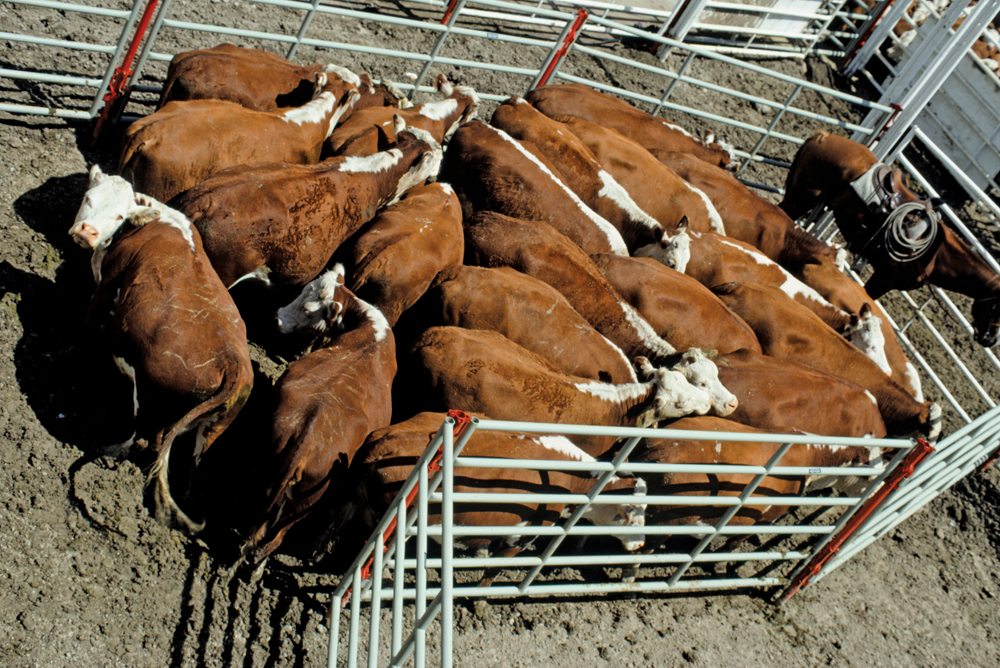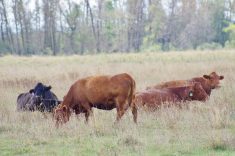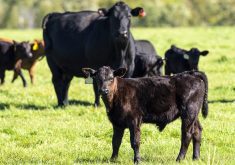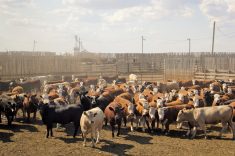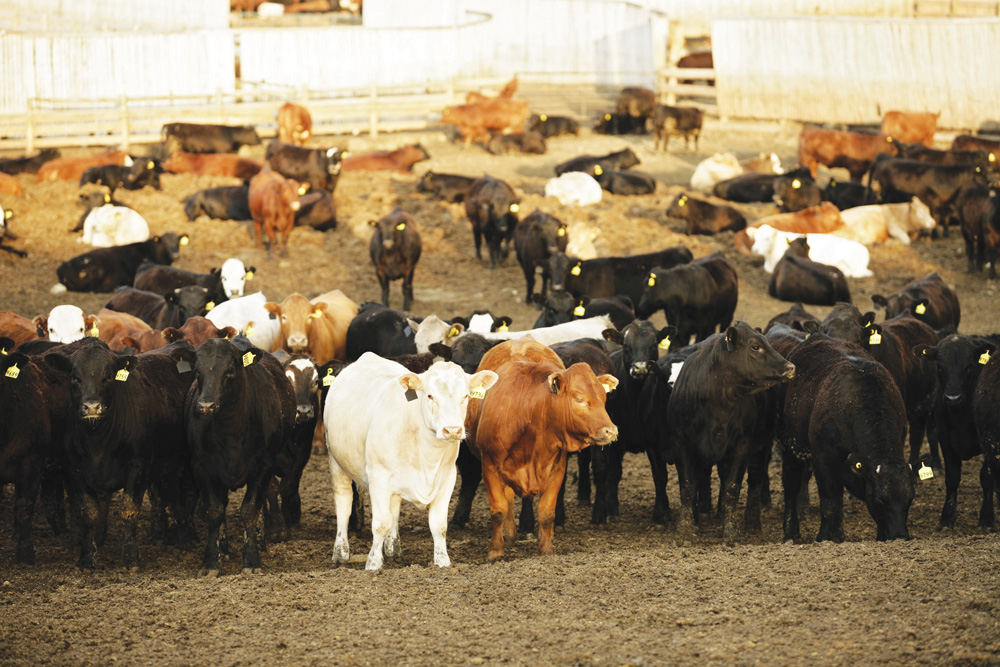Beef processors are being asked how their sustainability should be graded when the Canadian Roundtable for Sustainable Beef (CRSB) verification framework is released later this year.
The CRSB has released a draft of its processing sustainability indicators and invited the public to comment online from June 29 to Aug. 29.
Comments will be refined before a second, more specialized, round of consultations in fall.
The two-tiered consultation echoes a similar process with beef producers earlier this year.
“They’re a good measure,” said Brian Lemon, Manitoba Beef Producers general manager. “They certainly show, I think, a lot of what our producers already, for the most part, are doing. There wasn’t anything there that was really sort of 180-degree opposed to where our industry is wanting to go already. Our industry is some of the most environmentalist-thinking producers out there and we’re good stewards of the land and we want to do this for generations to come.”
Read Also
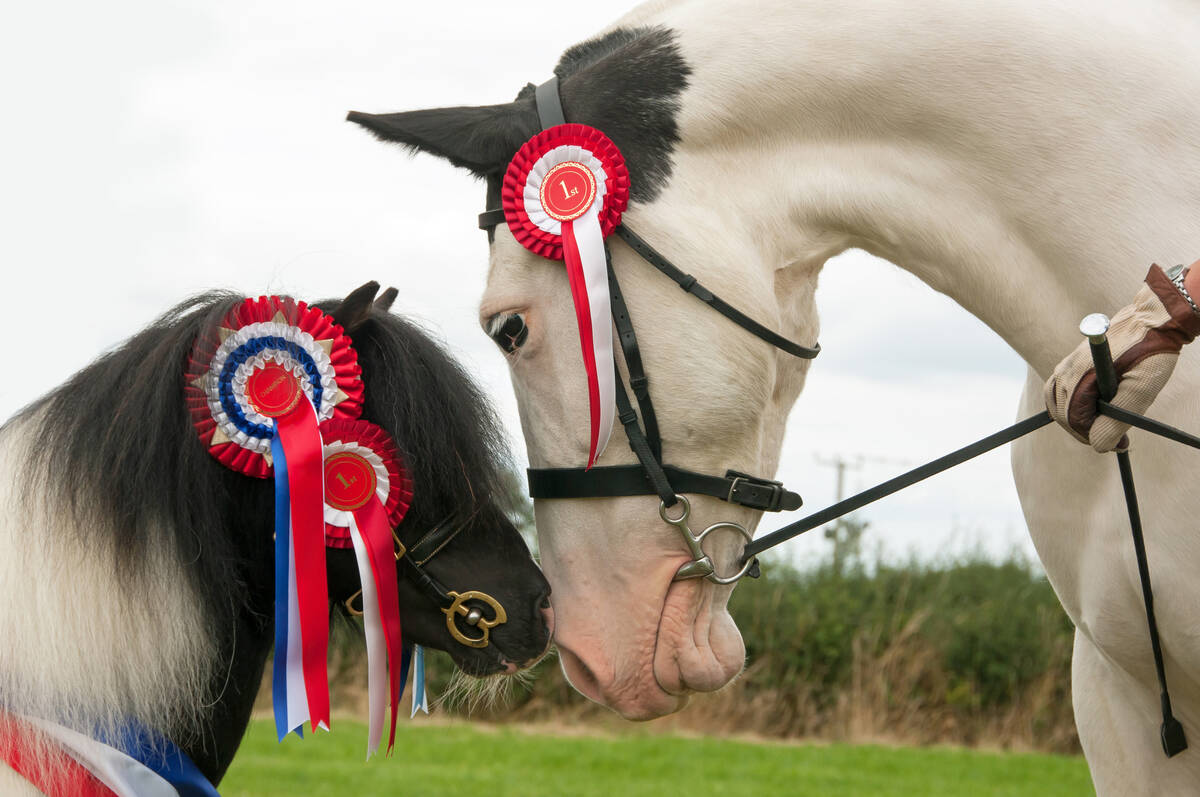
Linebreeding horses drives genetic bottlenecks
Too much linebreeding and prioritizing pedigree can narrow genetic diversity and lead to horse health problems in future generations.
The sector’s public perception has taken hits in recent years, including greenhouse gas emissions, water consumption and use of antibiotics.
This spring, Manitoba Beef Producers released a carbon policy covering, in part, maintaining grasslands and exploring carbon sequestration through grazing systems. Soil health and grazing management have also taken a lead in Manitoba Beef and Forage Initiatives research, partially sponsored by Manitoba Beef Producers.
Nationally, the industry has enhanced or introduced verification programs.
The Canadian Roundtable for Sustainable Beef is one of the latest efforts to meet increased public concern, and carries a mandate to connect interest throughout the value chain. The multi-stakeholder organization counts producers, processors, retailers, researchers, and agribusiness among its members.
Lessons learned
Over 100 comments were born out of the first round of producer consultation this year, a number Monica Hadarits, CRSB programs and verification director, hopes to see matched now that attention has turned to processing.
“We have learned a lot from the beef production side of things in the two previous rounds that we’ve done,” she said. “We’ve incorporated a lot of the higher-level feedback or general feedback that we’ve got — for example, incorporating the levels in each indicator to provide clarity on what we’re looking for in each of the indicators. So given that we have taken a lot of that feedback and incorporated it in and learned the lessons from the first two iterations, we do anticipate maybe a bit less.”
The organization has outlined 19 processor indicators ranging from natural resource management, people and community, animal health and welfare, food security and efficiency and innovation in the draft.
Currently, indicators would grade participating facilities out of three on issues like air impact and water use, land and ecosystem health, worker safety, community involvement, career development potential, animal housing conditions, efforts to minimize animal pain and stress, management of sick animals, food safety programming, waste reduction, energy efficiency and efforts to improve further.
Grades may be based on existing management plans or emergency protocols, invoices to measure energy or water use, interviews with staff, unit measurements such as the amount of carbon dioxide produced per head or water used per kilogram of beef, available first aid training and personal protective equipment, injury tracking, professional development opportunities, employees training, research investment, and technology scouting, among others.
Like existing verification programs, the framework will require an on-site audit and followup to track improvement.
“Hopefully, it fits in very well with the landscape of what’s already out there and hopefully it dovetails together really well because I think when you talk about sustainability, nobody is interested in sustainability of one step,” Lemon said. “I think we recognize that everybody is going to be more interested in sustainability of the overall production process right from farm to fork, if you will. So it’s going to be important that this work be sort of respectful, I guess, of the work that’s gone ahead.”
Recognition
Hadarits said the CRSB plans to compare its program with existing verification programs.
“One of the pillars of work that we’re doing as part of our verification framework is also looking at equivalency and developing a process for recognizing other programs because we realize that there are already a lot of programs out there, potentially, that address one or more of the indicators that we’re looking at,” she said.
The draft does not consider secondary processors, something the CRSB says is largely because such facilities do not handle live cattle.
Economics, likewise, had no direct mention, but instead will form an underpinning theme of the entire framework, Hadarits said. The topic is reflected in the grade scheme of multiple indicators rather than having an indicator class of its own.
“We’ve kind of explicitly called that out, especially in level three of most of the indicators where opportunities for improvement are really great, but they also have to be balanced with economic sustainability as well,” Hadarits said.
The CRSB has already anticipated a number of challenges, including more cost and investment for processors looking to meet standards and the risk that indicators may actually work to cross-purposes. Food safety, for example, may run up against efforts to lower water use while increased automation may bolster innovation, but cause job loss.
“One of the things that we found with testing our beef production indicators is there’s a lot of overlap or crossover and we’ve actually found that they’re more complementary than contradictory,” Hadarits said. “That (cross-indicator conflict) was identified as a challenge because, of course, one indicator that is not explicitly incorporated into our framework is the economics, so we always kind of have to keep that in the back of our minds and that’s why we’ve incorporated it as an overarching theme across all five pillars of sustainability.”
Now in the consultation’s final weeks, Hadarits said feedback has come from a wide geographic range. The CRSB is specifically reaching out to stakeholders in any under-represented areas.
The framework will be released in early December.


